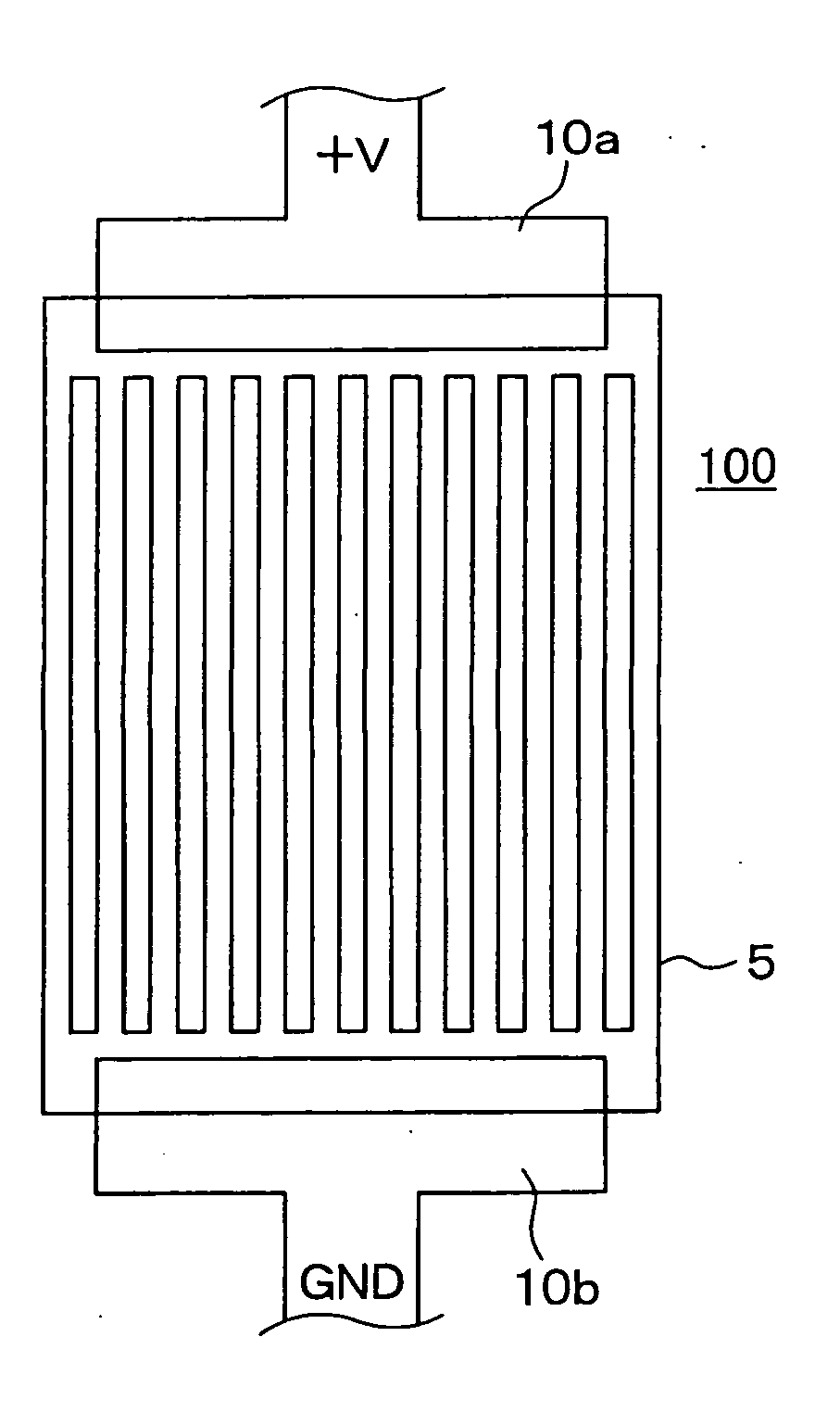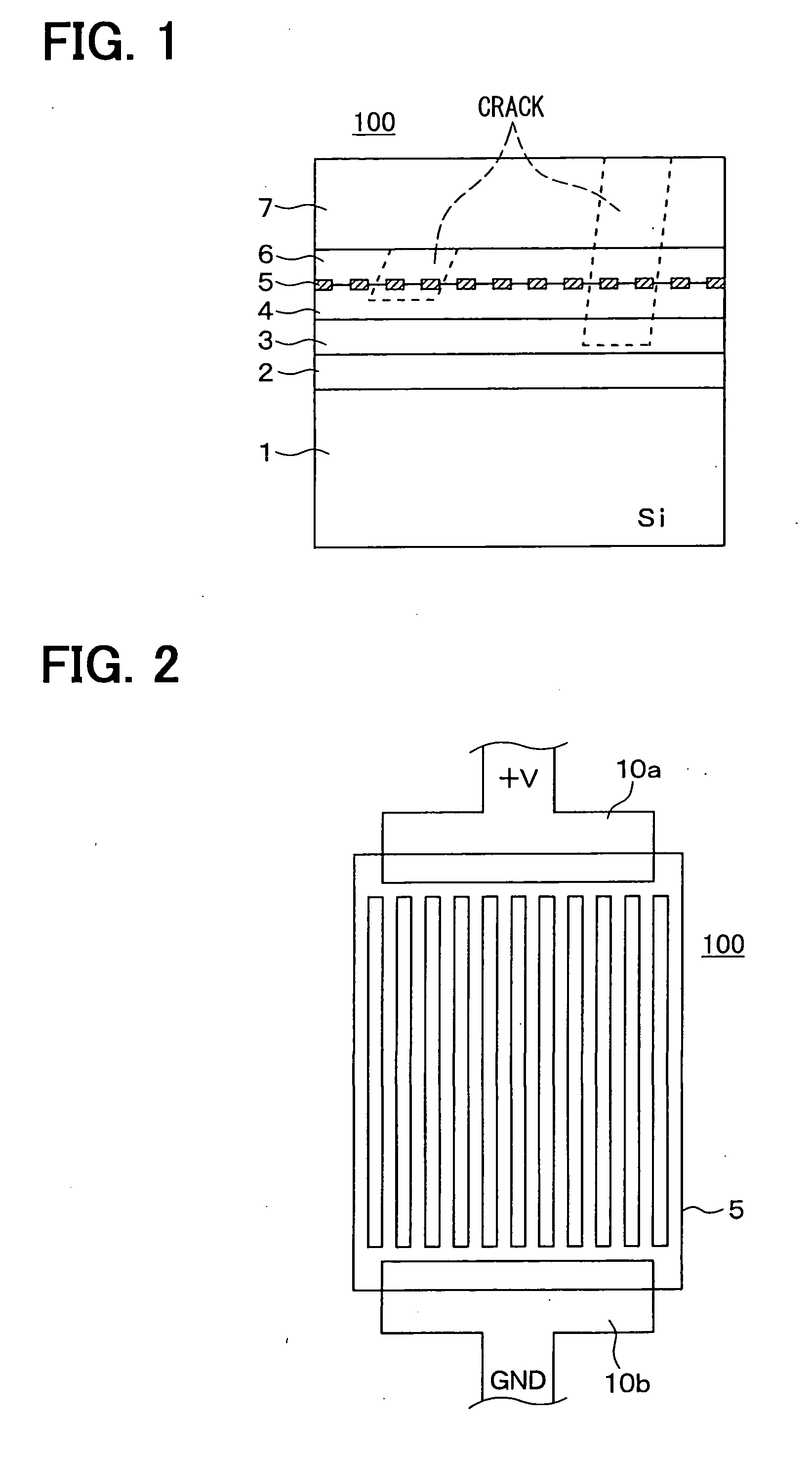Easily crack checkable semiconductor device
- Summary
- Abstract
- Description
- Claims
- Application Information
AI Technical Summary
Benefits of technology
Problems solved by technology
Method used
Image
Examples
first embodiment
[0019] A semiconductor device 100 according to a first embodiment of the present invention is shown in FIGS. 1 and 2. The device 100 includes a silicon substrate 1, a field oxide film 2 disposed on the substrate 1, a boron-doped phosphor-silicate glass (BPSG) film 3 disposed on the field oxide film 2, a first tetraethylorthosilicate (TEOS) film 4 disposed on the BPSG film 3, a thin film resistor 5 disposed on the first TEOS 4, a second TEOS film 6 disposed on the thin film resistor 5, and a protective film 7 disposed on the second TEOS film 6.
[0020] Specifically, the thin film resistor 5 is disposed on a surface of the first TEOS film 4 as a first insulation film, after the field oxide film 2, the BPSG film 3, and the first TEOS film 4 are stacked in this order on the substrate 1. Then, the second TEOS film 6 as a second insulation film covers the thin film resistor 5, and the protective film 7 covers a surface of the second TEOS film 6.
[0021] Disposing the thin film resistor 5 on...
second embodiment
[0051] A semiconductor device 200 according to a second embodiment of the present invention is shown in FIGS. 6 and 7. The device 200 includes a Laterally Diffused Metal Oxide Semiconductor (LDMOS) element.
[0052] The LDMOS element is formed on a substrate 13. The substrate 13 is constructed by forming an N−-type layer 12 on an N+-type silicon substrate 11. A LOCOS (local oxidation of silicon) oxide film 14 is formed on the surface of the N−-type layer 12. An N+-type drain region 15 of high impurity concentration is formed in the surface of the N−-type layer 12 to contact with the LOCOS oxide film 14. An N-type well 16 is formed to surround the N+-type drain region 15 and extends under the LOCOS oxide film 14. In the N-type well 16, impurity concentration decreases with distance from the N+-type drain region 15.
[0053] A P-type base region 17 is formed on the surface of the N−-type layer 12. The P-type base region 17 is terminated near the edge of the LOCOS oxide film 14. An N+-type...
PUM
 Login to View More
Login to View More Abstract
Description
Claims
Application Information
 Login to View More
Login to View More - R&D
- Intellectual Property
- Life Sciences
- Materials
- Tech Scout
- Unparalleled Data Quality
- Higher Quality Content
- 60% Fewer Hallucinations
Browse by: Latest US Patents, China's latest patents, Technical Efficacy Thesaurus, Application Domain, Technology Topic, Popular Technical Reports.
© 2025 PatSnap. All rights reserved.Legal|Privacy policy|Modern Slavery Act Transparency Statement|Sitemap|About US| Contact US: help@patsnap.com



